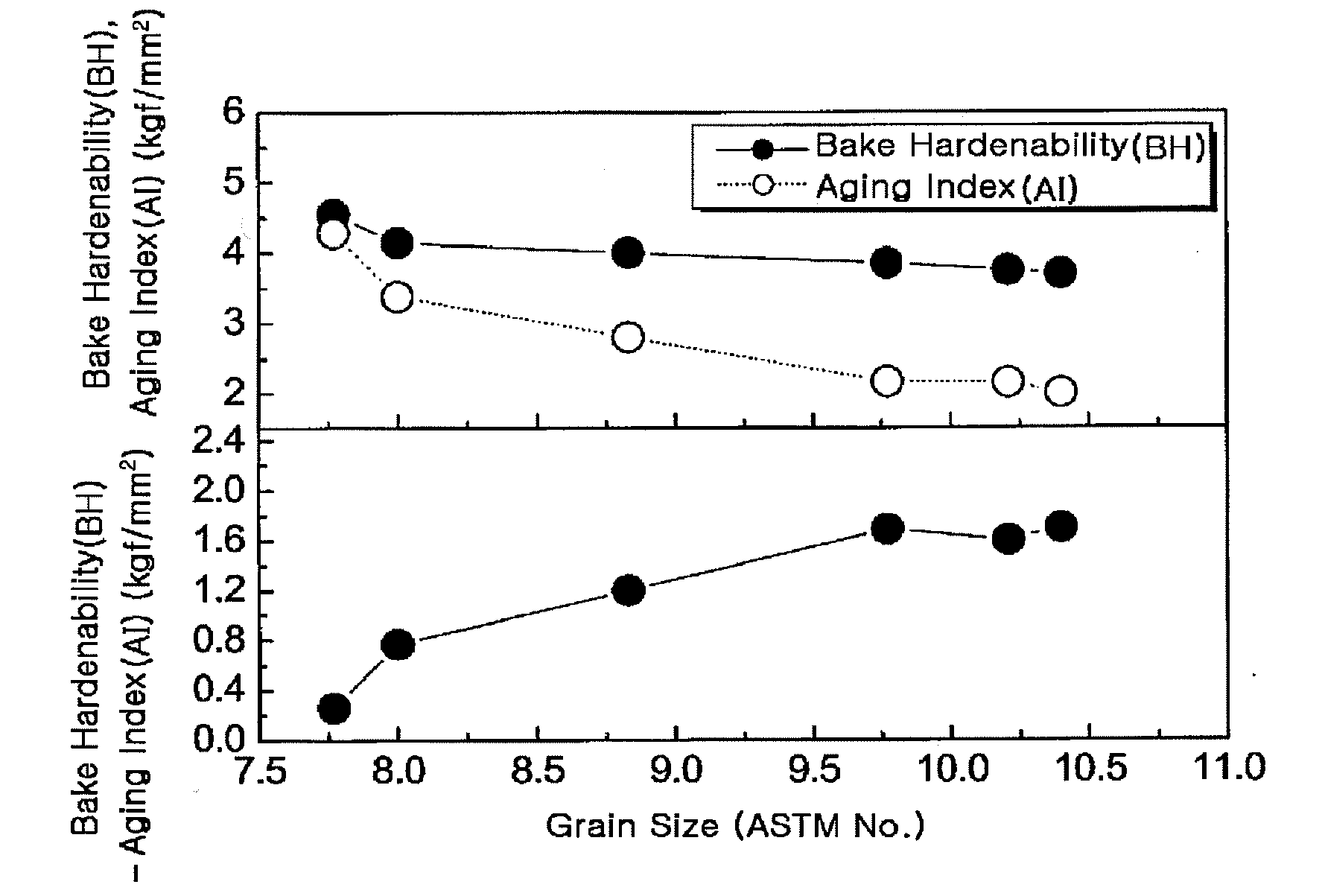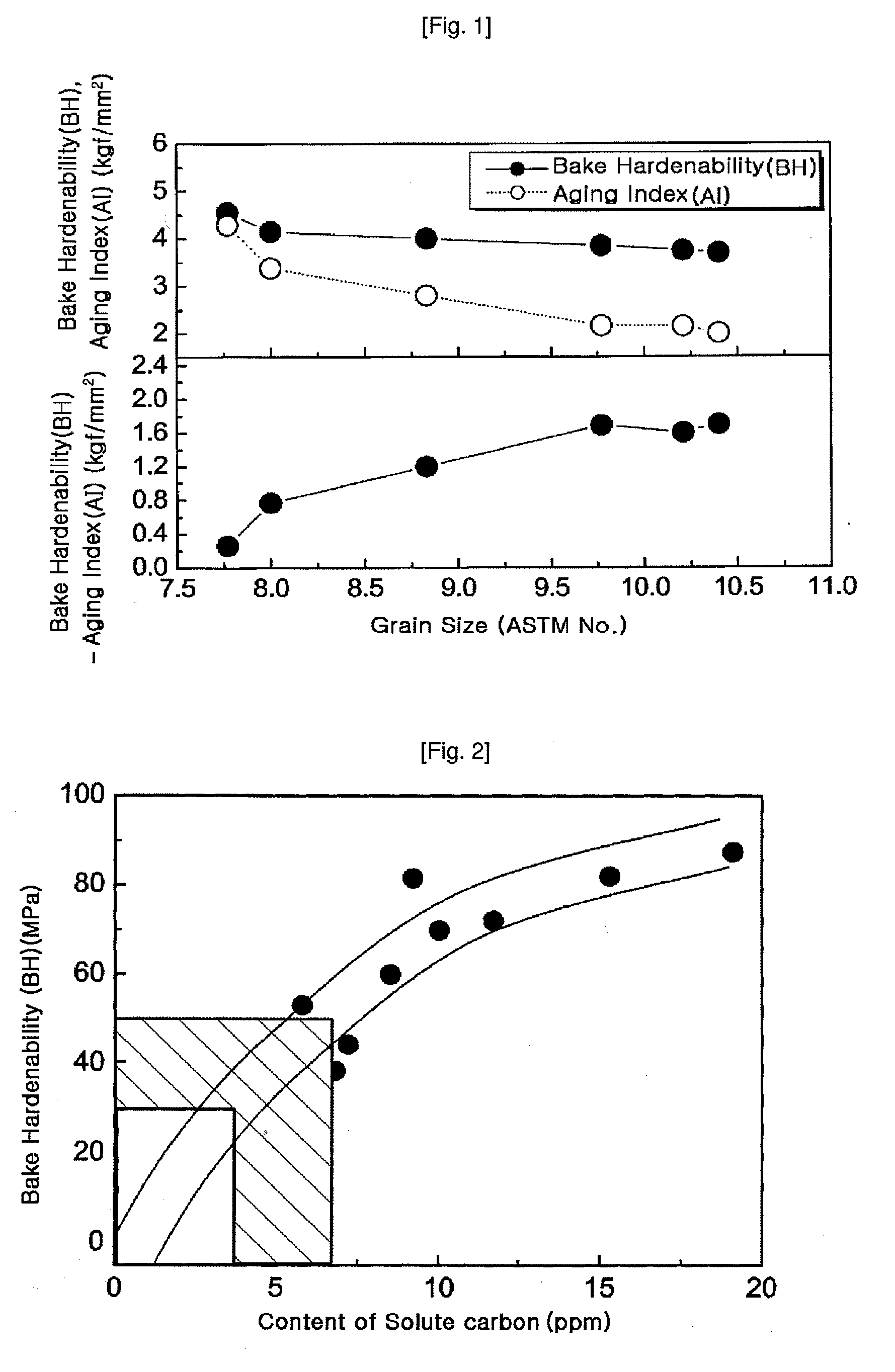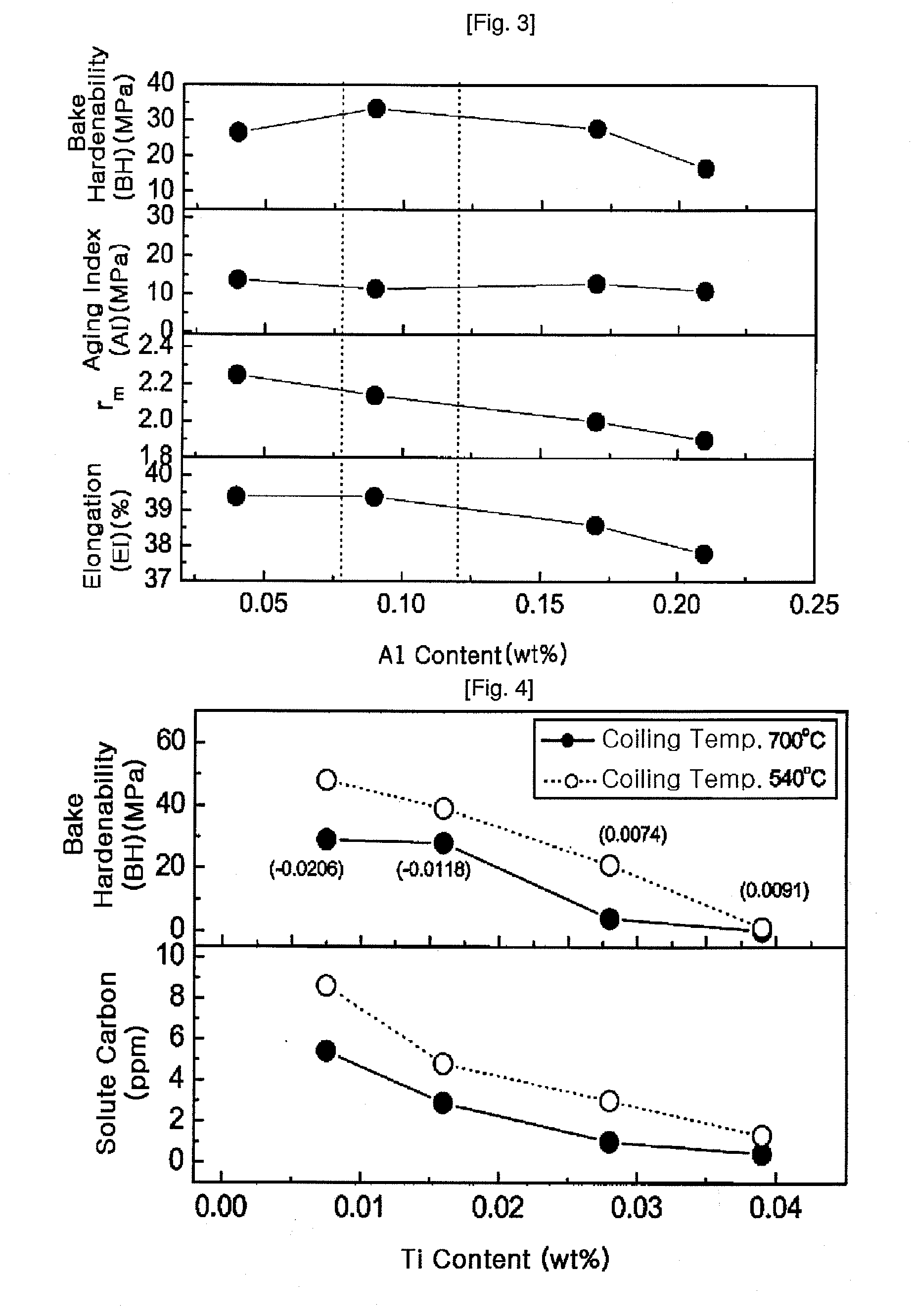Bake-Hardenable Cold Rolled Steel Sheet With Superior Strength, Galvannealed Steel Sheet Using the Cold Rolled Steel Sheet and Method for Manufacturing the Cold Rolled Steel Sheet
- Summary
- Abstract
- Description
- Claims
- Application Information
AI Technical Summary
Benefits of technology
Problems solved by technology
Method used
Image
Examples
example 1
[0186]After hot rolling steel slabs having compositions as shown in Table 1 to form hot rolled steel sheets, the hot rolled steel sheets were subjected to hot coiling, cold rolling, and continuous annealing according to conditions as shown in Table 2. Then, the annealed cold-rolled steel sheets were subjected to galvannealing at a temperature of 450° C., followed by temper rolling at a temper rolling reduction ratio of about 1.5%. Next, BH value, aging index (AI), grain size, and ductility-brittleness transition temperature (DBTT) at a drawing ratio of 2.0 for evaluation of secondary work embrittlement were measured with respect to final steel sheets, the results of which are shown in Table 2.
[0187]In addition, the microstructure of Inventive Steel No. 4 was observed with a microscope at a magnification of 200 after annealing, the results of which are shown in FIG. 6.
[0188]In addition, Inventive Steel No. 6, Comparative Steel No. 12, and 0.0019C-0.63Mn-0.056P-0.03Sol.Al-0.005Ti-0.00...
example 2
[0206]After hot rolling steel slabs having compositions as shown in Table 3 to form hot rolled steel sheets, the hot rolled steel sheets were subjected to coiling, cold rolling, and continuous annealing according to conditions as shown in Table 4. Then, the annealed cold-rolled steel sheets were subjected to galvannealing at a temperature of 450° C., followed by temper rolling at a temper rolling reduction ratio of about 1.5%. Next BH value, aging index (Al), and grain sizes were measured with respect to final steel sheets. Results thereof are shown in Table 4.
[0207]Table 3 shows the compositions of inventive steel sheets and comparative steel sheets wherein the inventive steel sheets were produced by strictly controlling amounts of C, Ti, Sol. Al and Mo. In Table 3, Steel Nos. 15˜30 indicate the inventive steels, and Steel Nos. 21˜26 indicate Comparative Steels.
[0208]Table 4 shows the manufacturing conditions and properties of steel sheets using steel slabs which have the compositi...
PUM
| Property | Measurement | Unit |
|---|---|---|
| Temperature | aaaaa | aaaaa |
| Temperature | aaaaa | aaaaa |
| Temperature | aaaaa | aaaaa |
Abstract
Description
Claims
Application Information
 Login to View More
Login to View More - R&D
- Intellectual Property
- Life Sciences
- Materials
- Tech Scout
- Unparalleled Data Quality
- Higher Quality Content
- 60% Fewer Hallucinations
Browse by: Latest US Patents, China's latest patents, Technical Efficacy Thesaurus, Application Domain, Technology Topic, Popular Technical Reports.
© 2025 PatSnap. All rights reserved.Legal|Privacy policy|Modern Slavery Act Transparency Statement|Sitemap|About US| Contact US: help@patsnap.com



